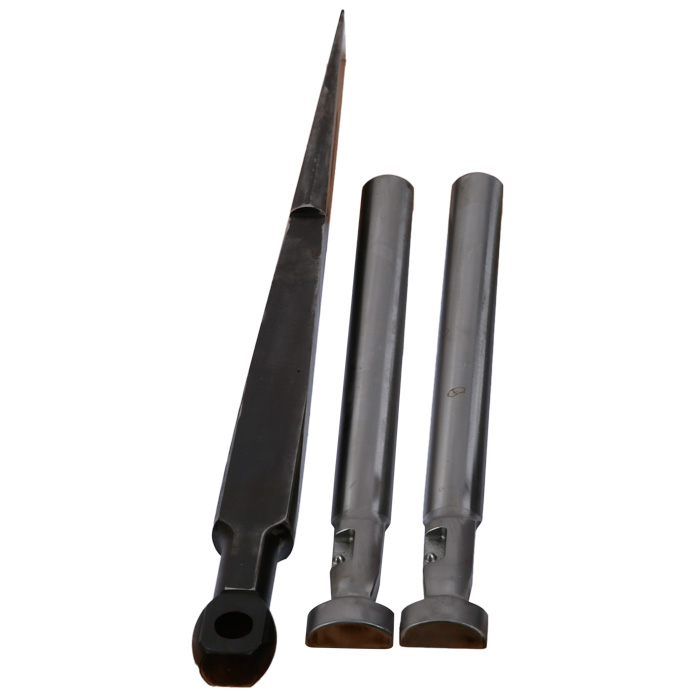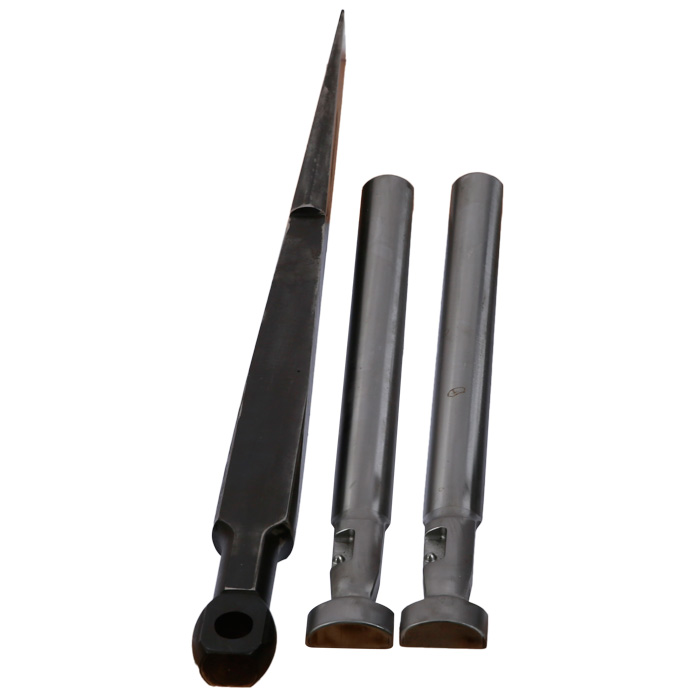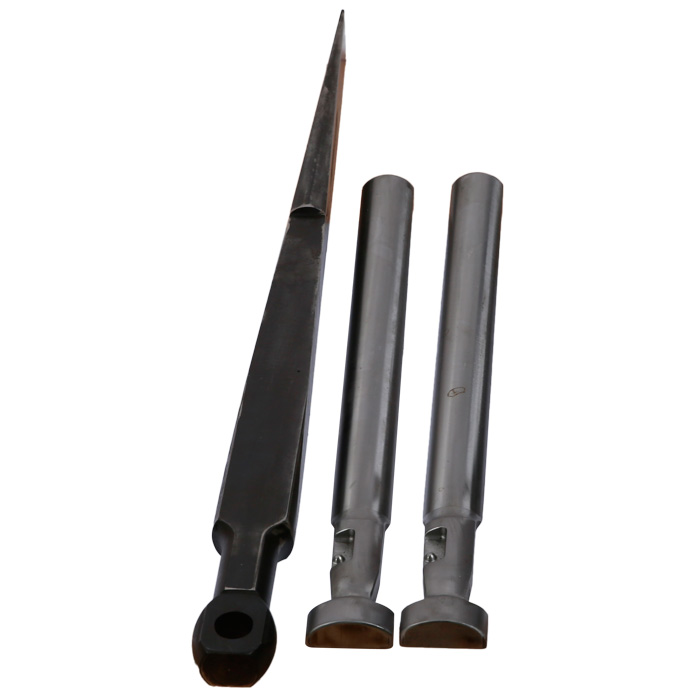Description
Our handheld hydraulic rock splitter is a powerful and efficient tool for breaking rocks. Its lightweight and portable design make it easy to use in tight spaces and hard-to-reach areas. The hydraulic pressure generated by this tool allows for precise and fast splitting of rocks, reducing the need for manual labor and heavy equipment. This handheld rock splitter is ideal for various applications, including construction, mining, quarrying, and demolition projects. With its reliable and durable construction, it provides a cost-effective solution for rock breaking.

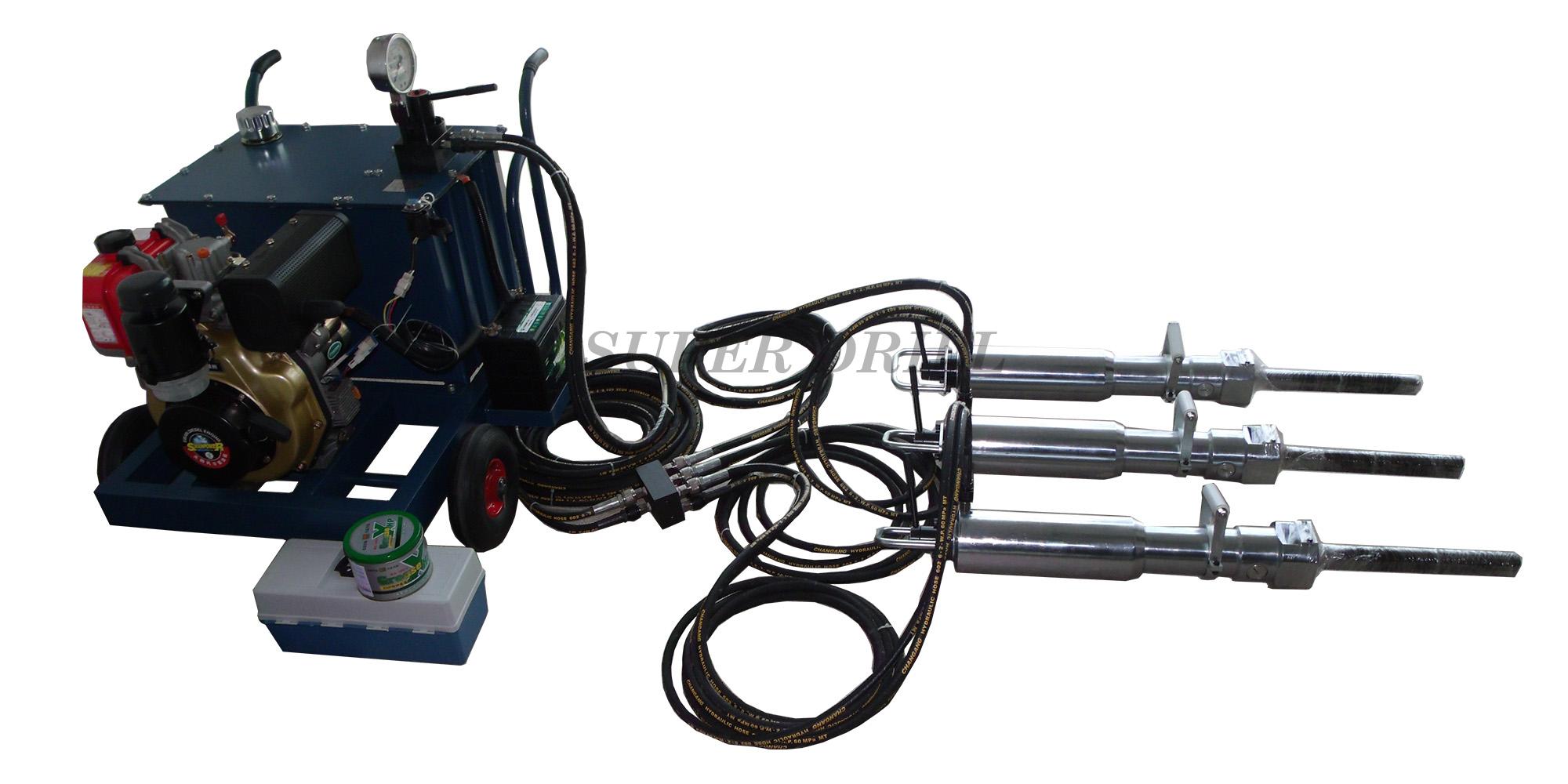
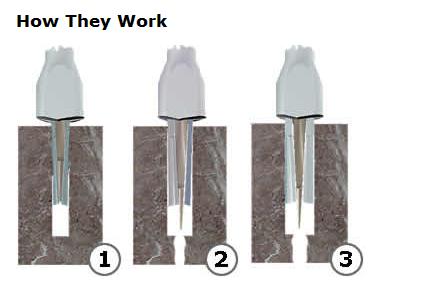
Phase 1, First, a hole of a precise diameter and depth is drilled into the material. The wedge set (one wedge and two counter wedges) is inserted into the drill-hole.
Phase 2, The wedge is driven forward under hydraulic pressure, forcing the counter wedges apart with a force of up to 450 tons. The material splits within seconds.
Phase 3, With enlarging counter wedges the split can be expanded to its maximum width. Reinforcing rods break or can be cut up with a suitable power tool.
Controlled Demolition for Infrastructure Work
Many contractors find they can reduce costs, save time and make demolition work profitable using the hydraulic splitting method. Hydraulic splitting means controlled demolition. As the direction of breaks can be determined, concrete can be cut in sections as large as your equipment can handle. Hydraulic splitting eliminates both shocks and vibrations associated with large impact tools. Engineered for heavy duty work, hydraulic splitters will out perform even large mounted impact machines. It can break large pieces of concrete or rock many times faster than paving breakers. Years of research and the use of hydraulic splitting on hundreds of job sites has proved this new method to be one of the most practical tools for demolition of concrete and rock. With a hydraulic splitter, the operator now has a very powerful tool at his command. With little effort, he can control the demolition as the job requires. The applications for the splitter are many, such as bridge decks, abutments, retaining walls, concrete walls, floor slabs, foundations, wall openings, reinforced concrete, rock and brick walls, locks, dams, culverts, road barriers and underwater demolition of concrete and rock.
|
How Splitting Works
The hydraulic splitter is powered by a 10,000 P.S.I. pump. The cylinder contains a control valve and a piston that moves the plug between the two feathers forcing them against the wall of the hole. When the tension increases beyond the tensile strength of the material, a split will occur. The entire operation of the cylinder is controlled by a single lever on top of the tool. The plug can be advanced and retracted with this lever. An automatic built-in valve reduces pressure after break. *Two or more hydraulic splitters can be operated at one time increasing the breaking. Example,two cylinders produce 1,400,000 lbs. of breaking force. Up to four splitters can be operated with one pump. |

|

|

|

|
| A hydraulic splitter was used to remove ends of overpass supports to form a keyway. The concrete was separated wide enough to cut reinforcing rods using enlarging feathers. | A workman carries splitter used to cut 14 ft. tunnel through base of dam for new penstock. |
Trench rock and boulders below grade can be broken with one or more hydraulic splitters. Hydraulic splitting eliminates dangers associated with blasting. These hydraulic splitters will also operate underwater without any modifications. |
hydraulic splitter---Hydraulic pump station
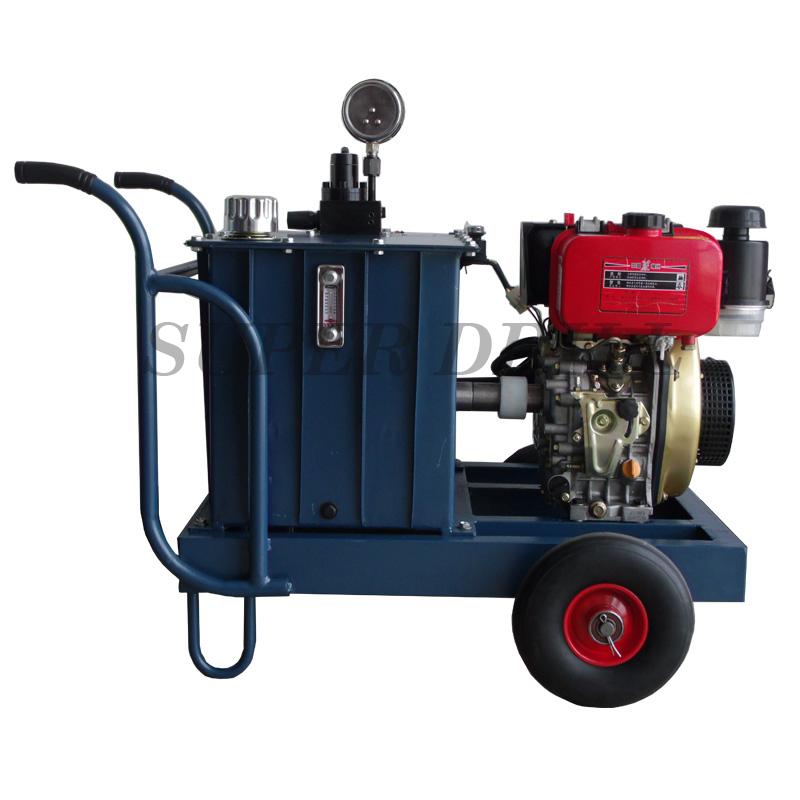
hydraulic splitter---Hydraulic pump station
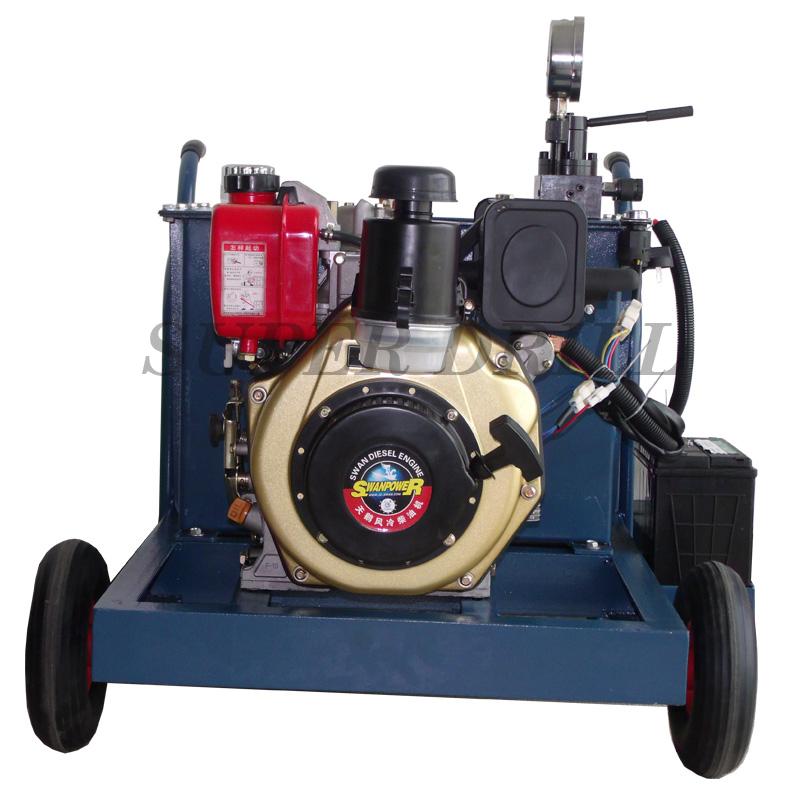
hydraulic splitter---Splitting gun and wedge
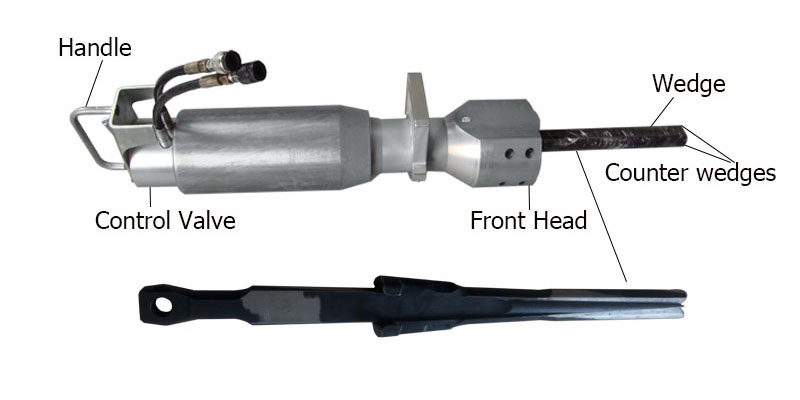
hydraulic splitter---Exhibition plan
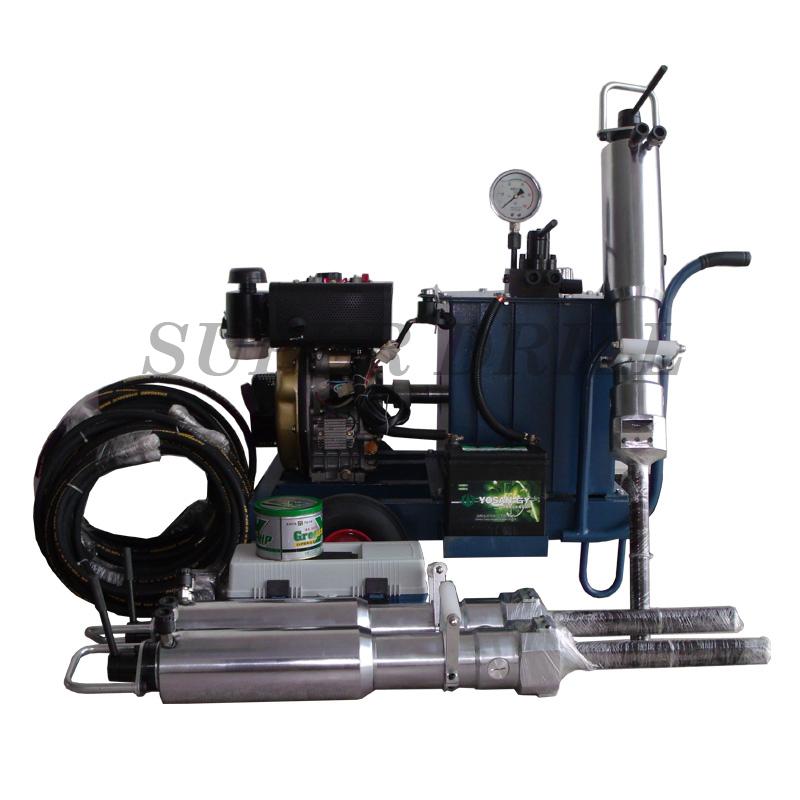
 Mobile:
Mobile: E-mail:
E-mail:
